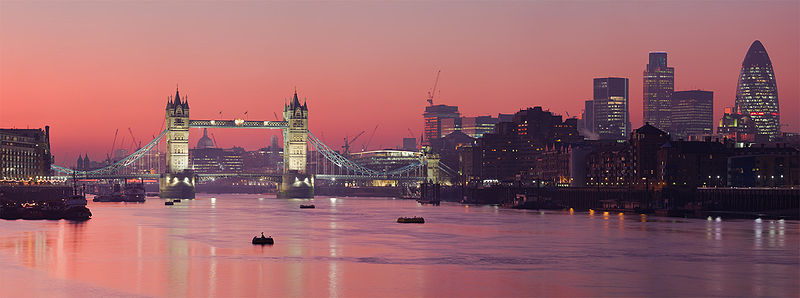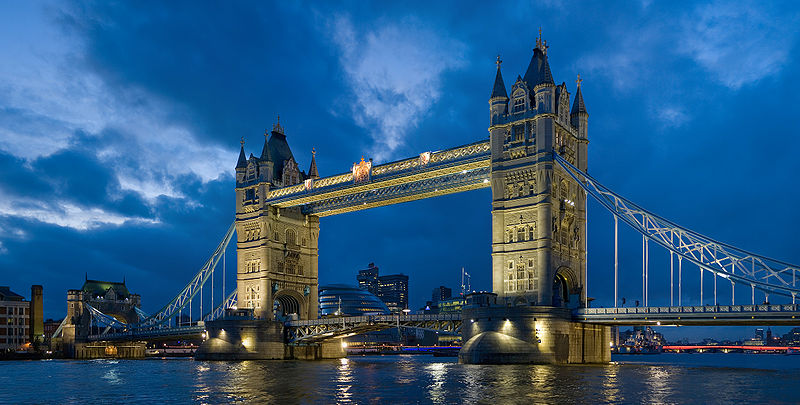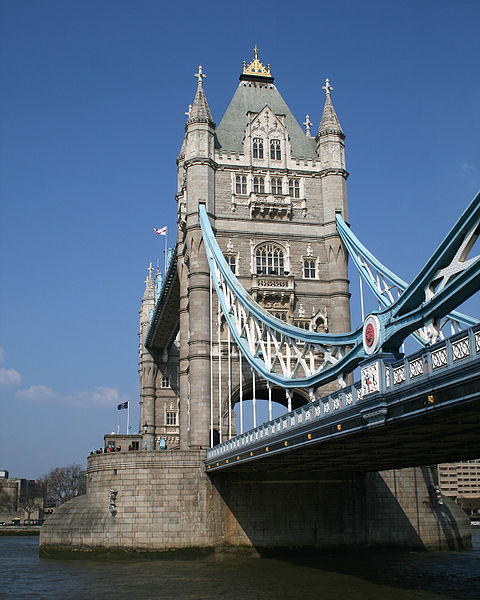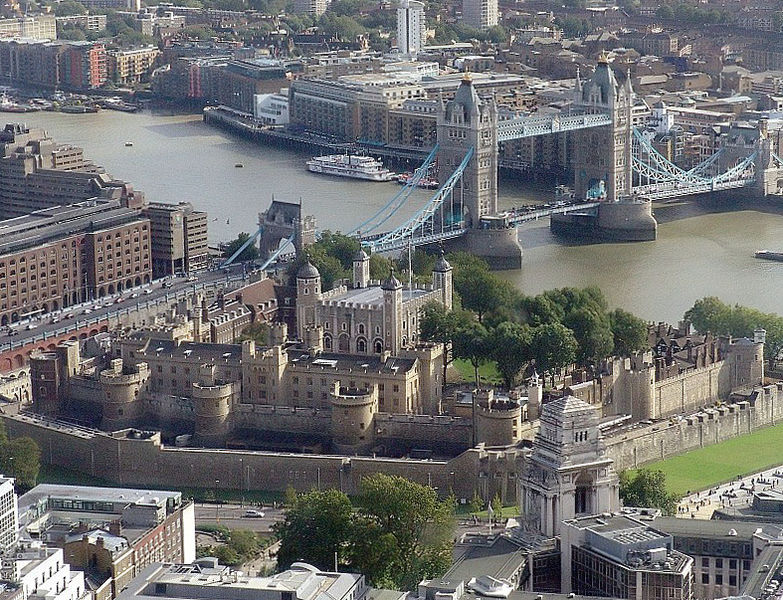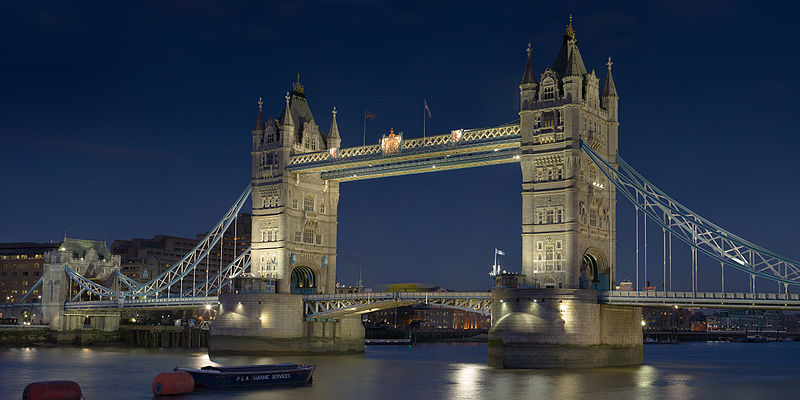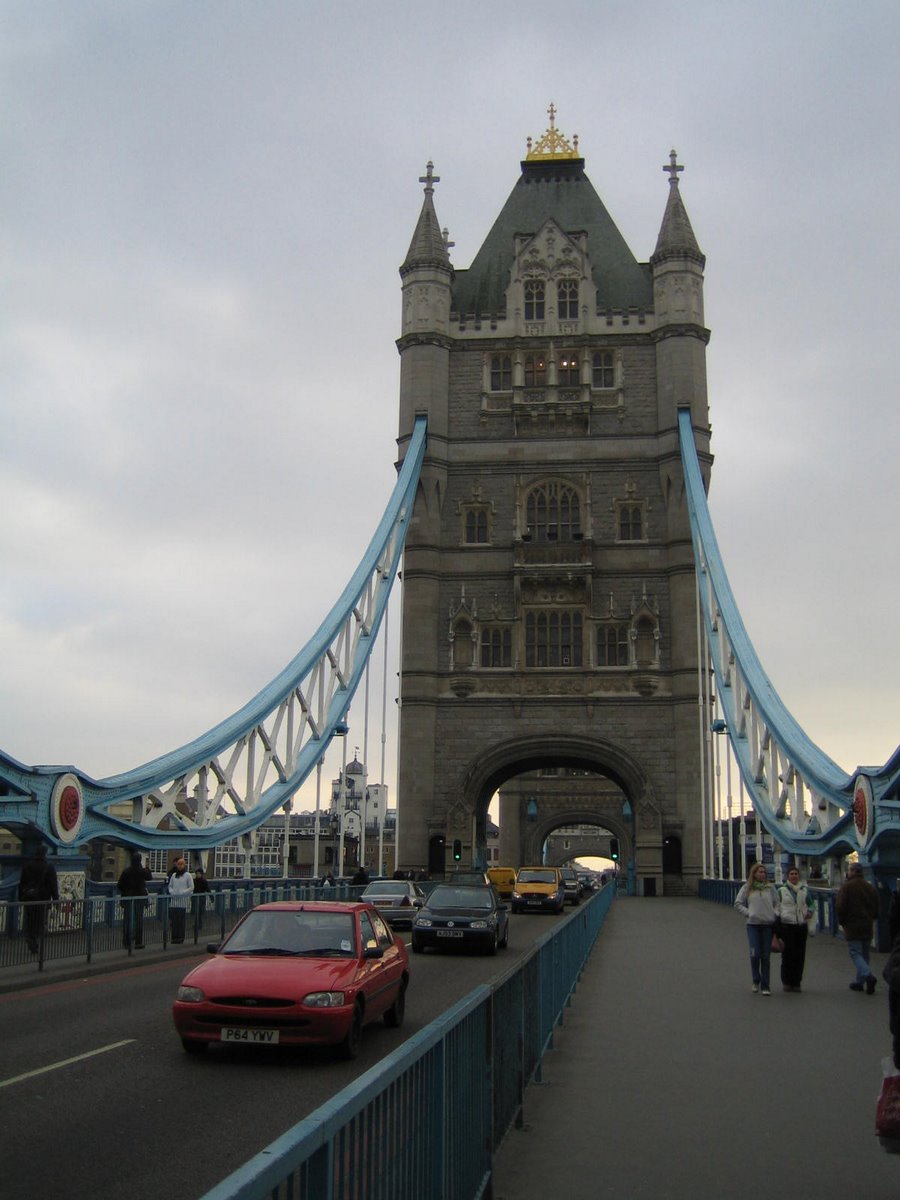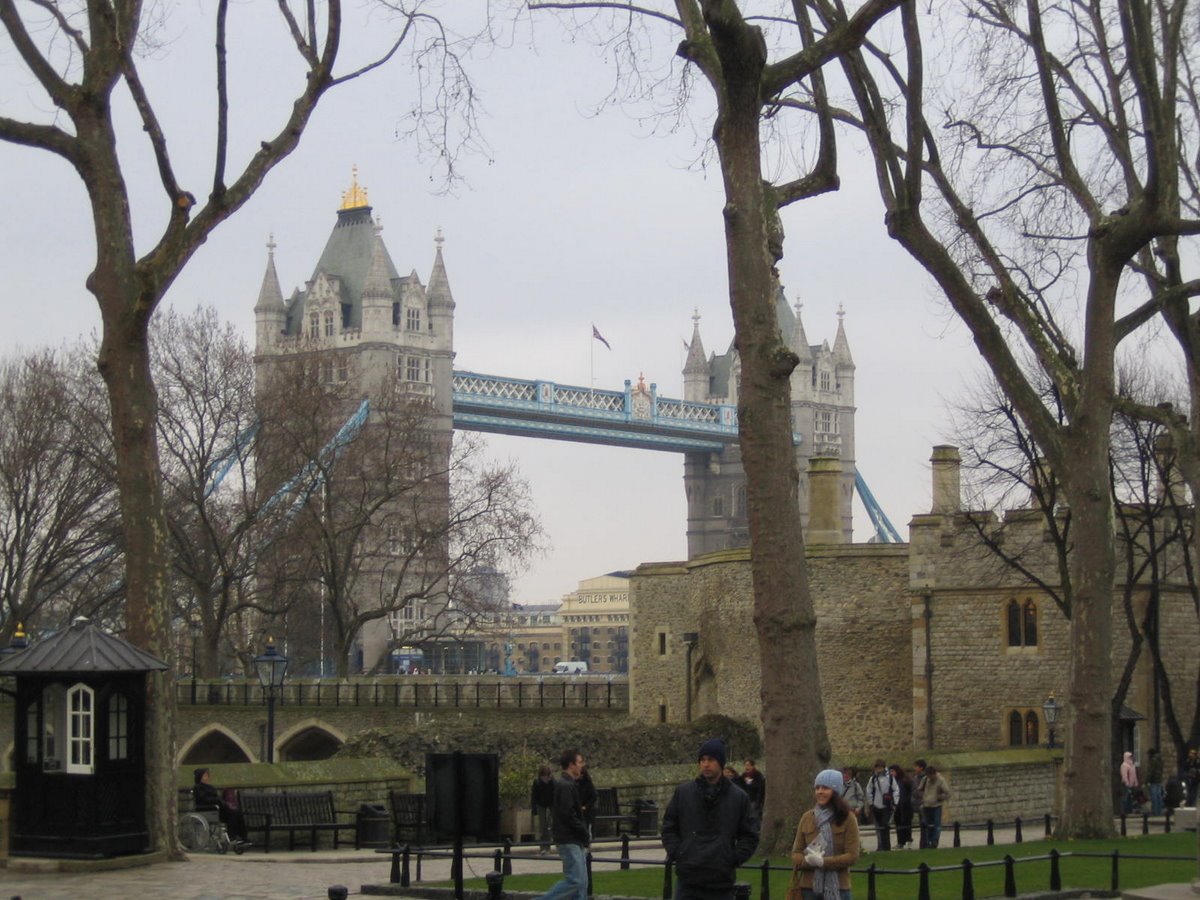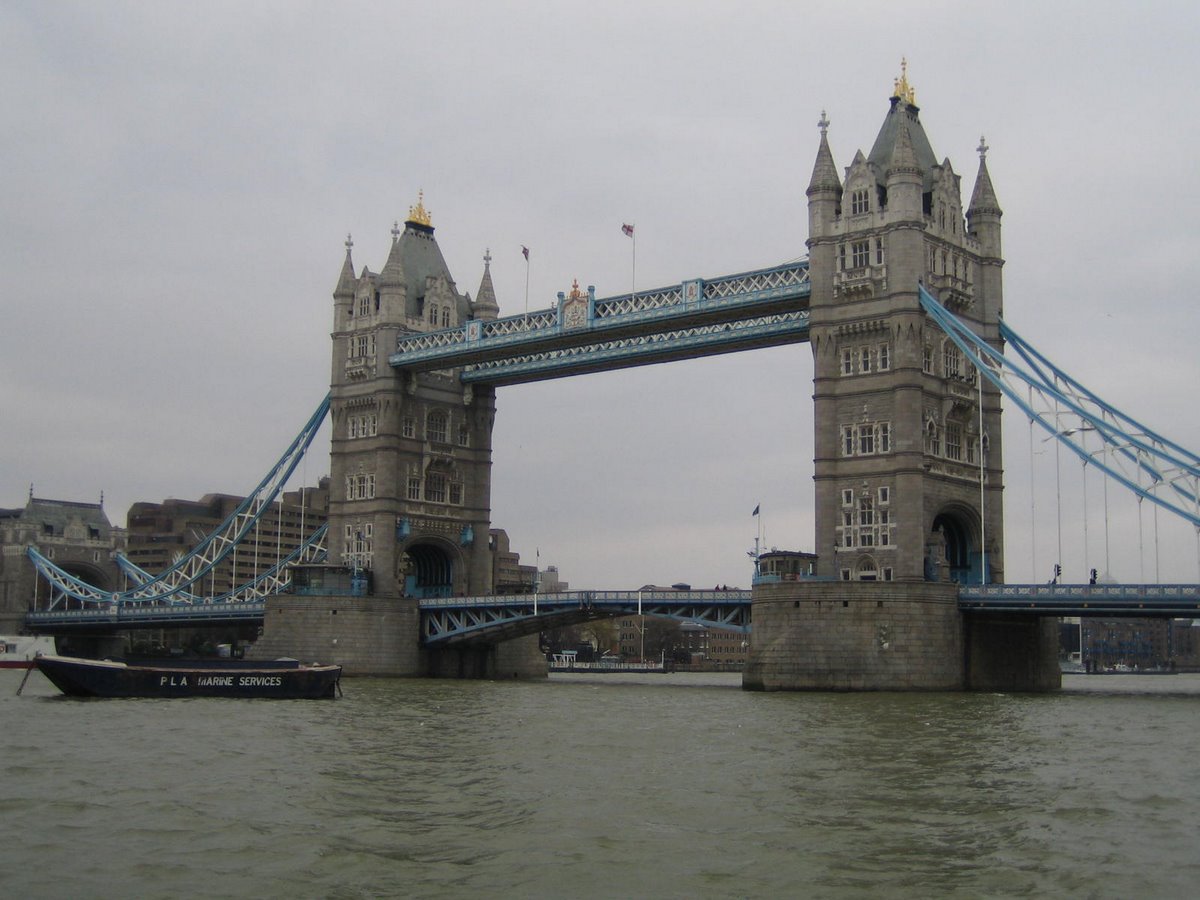| |||||||
Europe
North AmericaSouth AmericaAsiaAustralia and OceaniaAfrica |
Смотрите также: Tower Bridge Tower Bridge is a combined bascule and suspension bridge in London, England, over the River Thames. It is close to the Tower of London, which gives it its name. It has become an iconic symbol of London.
Tower Bridge Crosses Thames Locale London Boroughs: – north side: Tower Hamlets – south side: Southwark Design Bascule bridge, suspension bridge Total length 244 metres (801 ft) Longest span 61 metres (200 ft) 42.5 metres (139 ft) (open) (Mean High Water Spring Tide) Opening date 30 June 1894
The bridge consists of two towers which are tied together at the upper level by means of two horizontal walkways which are designed to withstand the horizontal forces exerted by the suspended sections of the bridge on the landward sides of the towers. The vertical component of the forces in the suspended sections and the vertical reactions of the two walkways are carried by the two robust towers. The bascule pivots and operating machinery are housed in the base of each tower. Its present colour dates from 1977 when it was painted red, white and blue for the Queen's Silver Jubilee. Originally it was painted a chocolate brown colour.
Tower Bridge is sometimes mistakenly referred to as London Bridge, which is actually the next bridge upstream. A popular urban legend is that in 1968, Robert McCulloch, the purchaser of the old London Bridge that was later shipped to Lake Havasu City, Arizona, believed that he was in fact buying Tower Bridge. This was denied by McCulloch himself and has been debunked by Ivan Luckin, the seller of the bridge.
Construction Construction started in 1886 and took eight years with five major contractors – Sir John Jackson (foundations), Baron Armstrong (hydraulics), William Webster, Sir H.H. Bartlett, and Sir William Arrol & Co. – and employed 432 construction workers. E W Crutwell was the resident engineer for the construction.
Two massive piers, containing over 70,000 tons of concrete, were sunk into the riverbed to support the construction. Over 11,000 tons of steel provided the framework for the towers and walkways. This was then clad in Cornish granite and Portland stone, both to protect the underlying steelwork and to give the bridge a pleasing appearance.
Jones died in 1887 and George D. Stevenson took over the project. Stevenson replaced Jones' original brick facade with the more ornate Victorian Gothic style, which makes the bridge a distinctive landmark, and was intended to harmonise the bridge with the nearby Tower of London. The total cost of construction was £1,184,000.
Road traffic Tower Bridge is still a busy and vital crossing of the Thames: it is crossed by over 40,000 people (motorists and pedestrians) every day. The bridge is on the London Inner Ring Road, and is on the eastern boundary of the London congestion charge zone. (Drivers do not incur a charge by crossing the bridge.) In order to maintain the integrity of the historic structure, the City of London Corporation have imposed a 20 miles per hour (32 km/h) speed restriction, and an 18-tonne weight limit on vehicles using the bridge. A sophisticated camera system measures the speed of traffic crossing the bridge, utilising a number plate recognition system to send fixed penalty charges to speeding drivers.
A second system monitors other vehicle parameters. Induction loops and piezoelectric detectors are used to measure the weight, the height of the chassis above ground level, and the number of axles for each vehicle.
Comments: 0 |
|
|||||







































